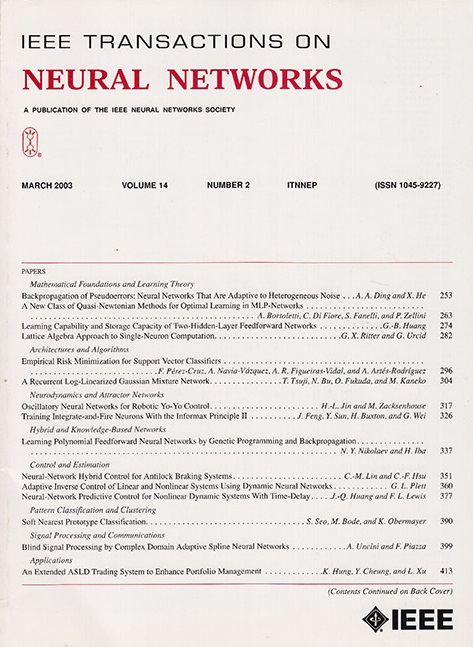增强图重构:结合双层图结构和图强化学习。
IF 8.9
1区 计算机科学
Q1 COMPUTER SCIENCE, ARTIFICIAL INTELLIGENCE
IEEE transactions on neural networks and learning systems
Pub Date : 2025-07-24
DOI:10.1109/tnnls.2025.3585906
引用次数: 0
摘要
在大多数现有研究中,组合优化问题通常被视为一维排序问题。由于维度压缩,该表示忽略了有关问题的一些信息。当将强化学习(RL)应用于该问题时,传统强化学习中使用的卷积神经网络(cnn)不能直接提取特征矩阵中两个元素之间的连接信息。本文以一类典型的组合优化问题——作业车间调度问题(job shop scheduling problem, JSSP)为例。考虑到以往研究的局限性,本文从图重构的角度重新审视任务,提出了一种结合双深度q网络(DDQN)和图注意网络(GAT)的图强化学习(GRL)方法,突破了CNN性能的限制。构建了双层图表示结构,全面学习调度信息的特征,克服了动态图学习的困难。实验表明,与基于原始深度强化学习(DRL)算法的模型相比,得到的解的质量和泛化性能都得到了提高。本文章由计算机程序翻译,如有差异,请以英文原文为准。
Enhancing Graph Reconstruction: Uniting Dual-Level Graph Structure With Graph Reinforcement Learning.
A combinatorial optimization problem is typically regarded as a 1-D sorting problem in most existing research. The representation ignores some information about the problem because of dimension compression. When applying reinforcement learning (RL) to this problem, convolutional neural networks (CNNs) used in conventional RL cannot directly extract the connection information between two elements in the feature matrix. A typical class of combinatorial optimization problems, the job shop scheduling problem (JSSP), is used in this article as an example. Considering the limitations in previous research, this article reexamines the task from the perspective of graph reconstruction and proposes a graph RL (GRL) method that combines a double deep Q-network (DDQN) and graph attention network (GAT) to achieve breakthroughs beyond the constraints of CNN performance. Moreover, a dual-level graph representation structure is constructed to comprehensively learn the features of scheduling information and overcome the difficulty of learning dynamic graphs. Experiments show that the quality of the obtained solution and generalization performance are both improved compared with models based on original deep RL (DRL) algorithms.
求助全文
通过发布文献求助,成功后即可免费获取论文全文。
去求助
来源期刊

IEEE transactions on neural networks and learning systems
COMPUTER SCIENCE, ARTIFICIAL INTELLIGENCE-COMPUTER SCIENCE, HARDWARE & ARCHITECTURE
CiteScore
23.80
自引率
9.60%
发文量
2102
审稿时长
3-8 weeks
期刊介绍:
The focus of IEEE Transactions on Neural Networks and Learning Systems is to present scholarly articles discussing the theory, design, and applications of neural networks as well as other learning systems. The journal primarily highlights technical and scientific research in this domain.
 求助内容:
求助内容: 应助结果提醒方式:
应助结果提醒方式:


